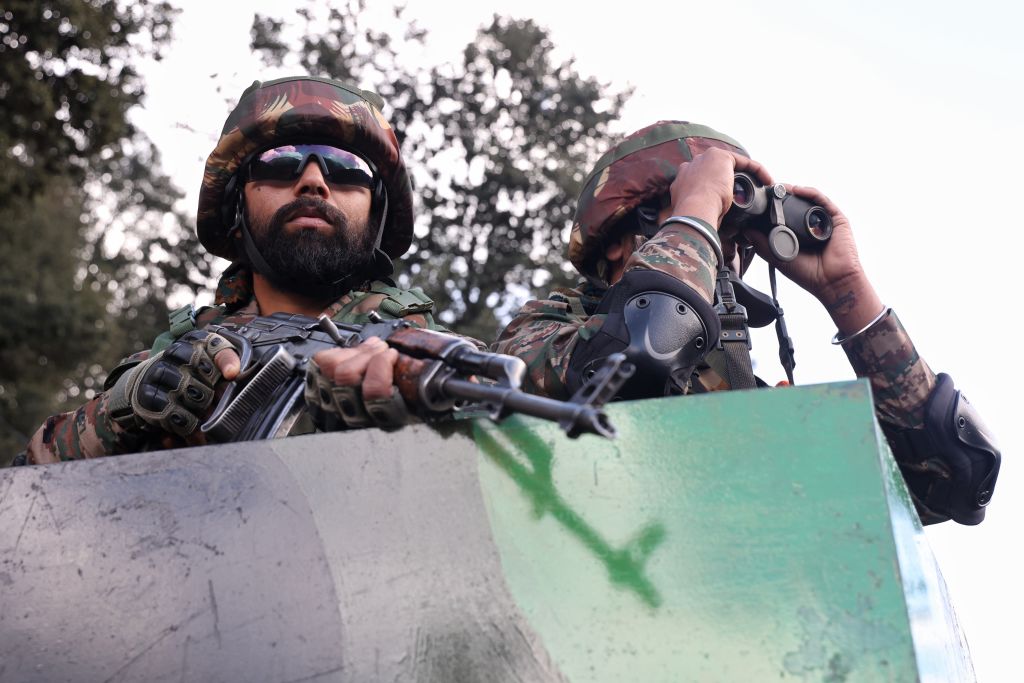synopsis
The Indian Army's infantry modernisation under the F-INSAS program is revolutionising soldier capabilities with advanced weapons, protection, and digital systems for next-gen warfare.
The nature of warfare is evolving at a breakneck pace. Once defined by open-field engagements and conventional tactics, modern combat now spans urban jungles, rugged high-altitude terrains, and cyber-infused battlefields. In response to these dynamic challenges, the Indian Army is undertaking a comprehensive overhaul of its infantry capabilities under the Future Infantry Soldier as a System (F-INSAS) program, part of the broader SMART soldier initiative. This transformative endeavour aims to boost soldier lethality, survivability, and battlefield effectiveness by integrating advanced weapons, cutting-edge protection, and networked digital systems.
The Backbone of the Future Soldier: Advanced Rifles and Firepower
A cornerstone of the modernisation drive is the replacement of outdated weaponry with state-of-the-art rifles and firepower systems. The transition from the legacy INSAS 5.56 mm rifles to the 7.62 mm Sig Sauer 716 and AK-203 assault rifles represents a significant leap forward. These new arms offer higher calibres, improved precision, and rapid-fire capabilities, essential attributes for both close-quarter battles and high-altitude engagements.
Alongside these rifles, the integration of Carl Gustaf M4 systems and advanced anti-tank guided missiles (ATGMs) is set to empower infantry units with the ability to neutralise enemy fortifications, armoured vehicles, and even unmanned aerial threats. Complementing these are smart grenades and precision munitions designed to deliver pinpoint lethality while minimising collateral damage.
Also read: Aero India 2025: LCA Mk2 prototype to be rolled out in 2025, first flight in early 2026
Modular Body Armour and Lightweight Gear
Soldier survivability is being reimagined with the advent of modular, lightweight protection systems. The new indigenous Level 6 body armour, along with advanced helmets developed for the Indian infantry, leverages modern composite materials to offer superior protection against armour-piercing rounds while significantly reducing the weight burden. This reduction in load translates directly into enhanced mobility and reduced fatigue, which is crucial in extended operations. Looking ahead, early trials in exoskeleton technology promise to further alleviate physical strain by augmenting soldier endurance and load-carrying capacity. Still in the prototype phase, these exoskeletons hint at a future where infantry mobility could be dramatically enhanced, particularly in the challenging terrains of high-altitude and urban warfare.

Night Dominance: Advanced Surveillance and Night Vision
Control of the night battlefield is an emerging imperative, and the Indian Army is equipping its forces with advanced night vision devices (NVDs) and thermal imaging systems.
Third-generation NVDs, integrated with riflescopes, offer improved target detection and precise engagement capabilities under low-visibility conditions. Complementary to these are handheld and helmet-mounted night vision goggles (NVGs), which allow soldiers to transition seamlessly between day and night operations. Moreover, the deployment of drones and mini-unmanned aerial vehicles (UAVs) within infantry units is revolutionising reconnaissance. These unmanned systems provide real-time intelligence, extending the battlefield vision well beyond the line of sight and ensuring that commanders remain informed of enemy movements in near real-time.
Integrated Battlefield Technology: Digital and Network-Centric Warfare
In today's networked battlefield, information superiority is as critical as firepower. The Indian Army invests heavily in digital systems to create a fully integrated, network-centric force. Advanced Battlefield Management Systems (BMS) enable secure data-sharing across the platoon, company, and battalion levels, augmented by live satellite feeds and UAV-derived intelligence. Artificial Intelligence (AI)-powered decision support systems are being introduced to facilitate predictive threat assessments, allowing quicker and more effective tactical responses. Secure communication is further bolstered by adopting software-defined radios (SDRs), which provide interference-free and encrypted channels essential for maintaining operational security.
New Tactics and Battlecraft for Next-Gen Infantry Operations
Modern warfare demands flexibility and adaptability in tactics. Urban warfare, with its high-density and complex environments, requires specialised training and equipment for effective counterinsurgency operations. The Indian Army is honing its urban combat capabilities to ensure its soldiers can navigate and dominate these challenging terrains. Concurrently, the rise of drone warfare has led to the development of swarm drone tactics and dedicated anti-drone operations, enabling infantry units to counter emerging aerial threats.
In the high-altitude theatres along the Line of Actual Control (LAC), modernised infantry units are being outfitted with specialised cold-weather gear, oxygen supply systems, and clothing designed to withstand the harshest conditions. Furthermore, enhanced coordination with special forces like the army's own Para SF, the navy's Marine Commandos (MARCOS), the air force's GARUD commandos, and elite paramilitary and counter-terrorism units ensures that the infantry can effectively integrate into joint operations, a necessity in today's multifaceted battle scenarios.

Smart Soldier Systems and Blast & IED Protection
Beyond traditional combat gear, the future soldier is being equipped with smart soldier systems that amalgamate protective and operational technologies into a single, cohesive unit. Integrated sensor arrays within uniforms monitor vital signs and environmental conditions, transmitting real-time data to command centres. This digital interface not only aids in timely medical intervention but also enhances situational awareness on the ground. In parallel, advancements in blast and improvised explosive device (IED) protection are being pursued vigorously. Research into graphene-based armours and nanotechnology-enhanced materials is underway to develop next-generation blast mitigation systems. These innovations are critical for infantry units operating in environments where the threat of roadside bombs and explosive devices is ever-present.
The Road Ahead for Indian Infantry Modernisation
The modernisation of the Indian infantry is well underway, with the F-INSAS program and the larger SMART soldier initiative at its helm. The transition to advanced rifles, modular body armour, exoskeleton-assisted mobility, and smart digital systems marks a significant step towards creating a fully digitised, networked, and AI-enabled infantry force. While challenges remain, particularly in scaling up production, extensive field trials, and integrating these advanced systems into existing operational doctrines, the vision for 2030 is clear. The modern Indian infantry is poised to emerge as a formidable force on both regional and global stages, capable of operating across diverse and challenging terrains with enhanced lethality and survivability.
As these transformative technologies begin to see field deployment, the Indian Army's commitment to ensuring that every soldier is optimally equipped for next-generation warfare will undoubtedly redefine infantry combat for decades to come.
(Ashu Maan is an Associate Fellow at the Centre for Land Warfare Studies. He is currently pursuing his PhD from Amity University, Noida, in Defence and Strategic Studies.)
)
 subscribe to Asianet News Whatsapp channel by clicking here.
subscribe to Asianet News Whatsapp channel by clicking here.